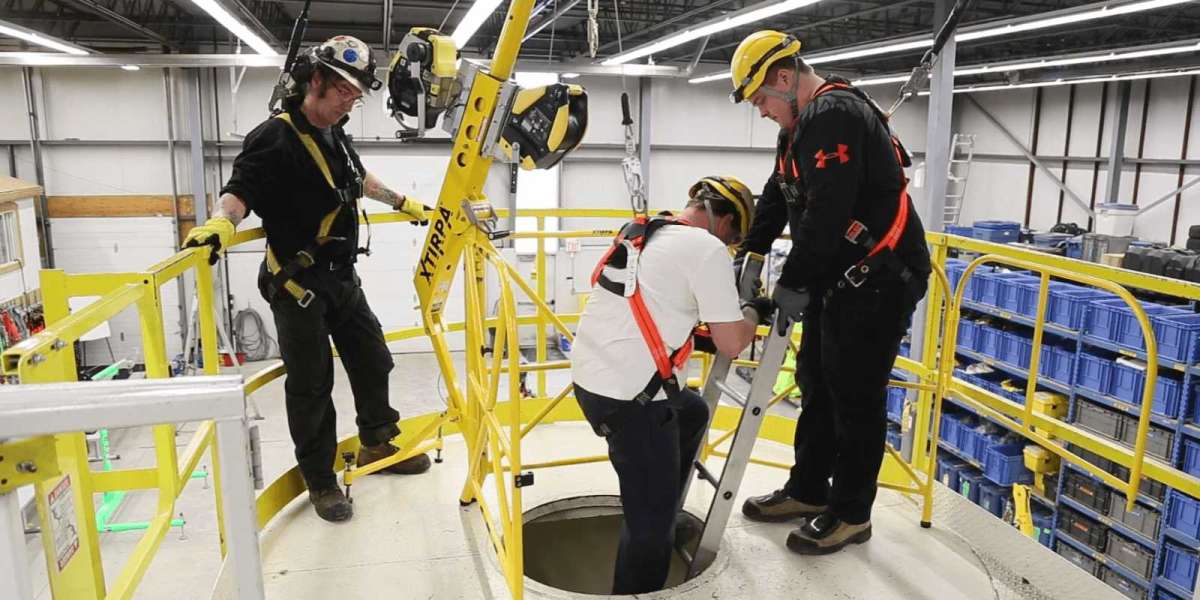Working at heights comes with significant risks, making fall protection a crucial aspect of workplace safety. Falls are one of the leading causes of workplace injuries and fatalities. Still, with the proper training, these incidents can be prevented.
Fall protection training is designed to equip workers with the knowledge and skills to stay safe at elevated locations. This training ensures employees understand safety protocols, proper equipment usage, and emergency procedures. This guest post will explore how fall protection training is a life-saving necessity in various workplaces and why it should never be overlooked.
The Risks of Working at Heights
Falling from a height can result in severe injuries, long-term disabilities, or even fatalities. Construction, roofing, window cleaning, and maintenance frequently require workers to operate in high-risk environments. Without proper training, workers face dangers like:
- Lack of Proper Equipment Use – Harnesses, guardrails, and anchors must be used correctly to provide maximum protection.
- Unstable Work Surfaces – Slippery, uneven, or improperly constructed surfaces increase fall risks.
- Lack of Awareness – Workers unfamiliar with fall hazards may unknowingly put themselves in danger.
- Inadequate Emergency Response Knowledge – Knowing how to react in case of a fall can mean the difference between life and death.
By understanding these risks, businesses and employees can take proactive steps to ensure that safety measures are in place.
Why Fall Protection Training is Crucial
Fall protection training provides the necessary education and practical skills to reduce workplace fall risks. Here’s why it is an essential investment:
1. Prevents Serious Injuries and Fatalities
Training teaches workers how to use safety equipment properly, reducing the chances of falls and severe injuries. Workers learn how to inspect their gear, secure themselves correctly, and identify potential hazards before they become a problem.
2. Promotes a Safety Culture
When employees receive comprehensive training, they develop a safety-first mindset. They become more vigilant about workplace hazards and encourage their peers to follow protocols, leading to a safer overall work environment.
3. Ensures Legal Compliance
Workplace safety regulations mandate fall protection training in various industries. Employers who fail to provide adequate training can face legal penalties, fines, and even business closures. Compliance with these regulations helps avoid legal trouble and keeps employees protected.
4. Boosts Workplace Efficiency
Workers who feel safe and confident in their abilities tend to be more productive. Fall protection training reduces the likelihood of accidents, minimizing downtime and improving overall workflow.
5. Reducing Costs for Businesses
Workplace accidents lead to compensation claims, medical expenses, and lost work hours. By investing in proper training, businesses can significantly lower these costs while keeping their workforce safe.
Key Components of Fall Protection Training
A well-structured fall protection training program includes various aspects that ensure workers are fully equipped to handle high-risk situations. Some key components include:
1. Understanding Fall Hazards
Workers are educated about common hazards that lead to falls, such as unstable surfaces, improper ladder use, and unguarded edges.
2. Proper Use of Safety Equipment
Training covers how to correctly use fall protection gear, including harnesses, lanyards, anchor points, and guardrails. Workers also learn how to inspect and maintain their equipment.
3. Emergency Response and Rescue Procedures
Accidents can still happen, even with precautions in place. Employees are trained on how to respond to falls, perform rescues, and provide first aid to injured workers.
4. Workplace Safety Regulations and Compliance
Participants learn about industry-specific regulations and legal requirements to ensure they adhere to workplace safety standards.
5. Hands-On Practical Training
Classroom learning is supplemented with hands-on exercises where workers practice real-life scenarios. This helps them become comfortable with their equipment and develop essential problem-solving skills.
Who Needs Fall Protection Training?
Anyone working at elevated locations should undergo fall protection training. This includes professionals in industries such as:
- Construction and Roofing – Workers handling scaffolding, roofing, and building structures.
- Maintenance and Window Cleaning – Employees working on high-rise buildings.
- Telecommunications and Electrical Work – Technicians handling utility poles and cell towers.
- Warehouse and Industrial Work – Employees operating on elevated platforms and storage racks.
For those seeking fall protection training in Calgary, several certified training providers offer specialized courses tailored to different industries. It is essential to choose a program that aligns with your specific job requirements.
Conclusion
Fall protection training is not just an industry requirement—it is a life-saving necessity. Proper training equips workers with essential knowledge, reduces workplace injuries, and promotes a culture of safety. For businesses, it ensures compliance, lowers costs, and enhances productivity.
Investing in high-quality training is one of the best decisions you can make if you work at heights or manage employees who do. Workplace safety begins with education, preparation, and the right protective measures.
Stay safe, stay trained, and always prioritize fall protection.
Certified Safety Training provides expert workplace safety education, specializing in fall protection, hazard awareness, and regulatory compliance. With hands-on training and industry-certified instructors, they equip workers with essential skills to prevent accidents. Their programs help businesses enhance workplace safety, reduce risks, and meet industry standards for a secure work environment.



